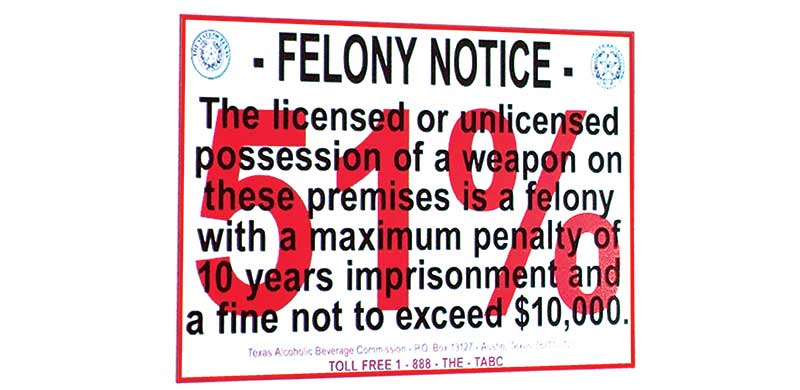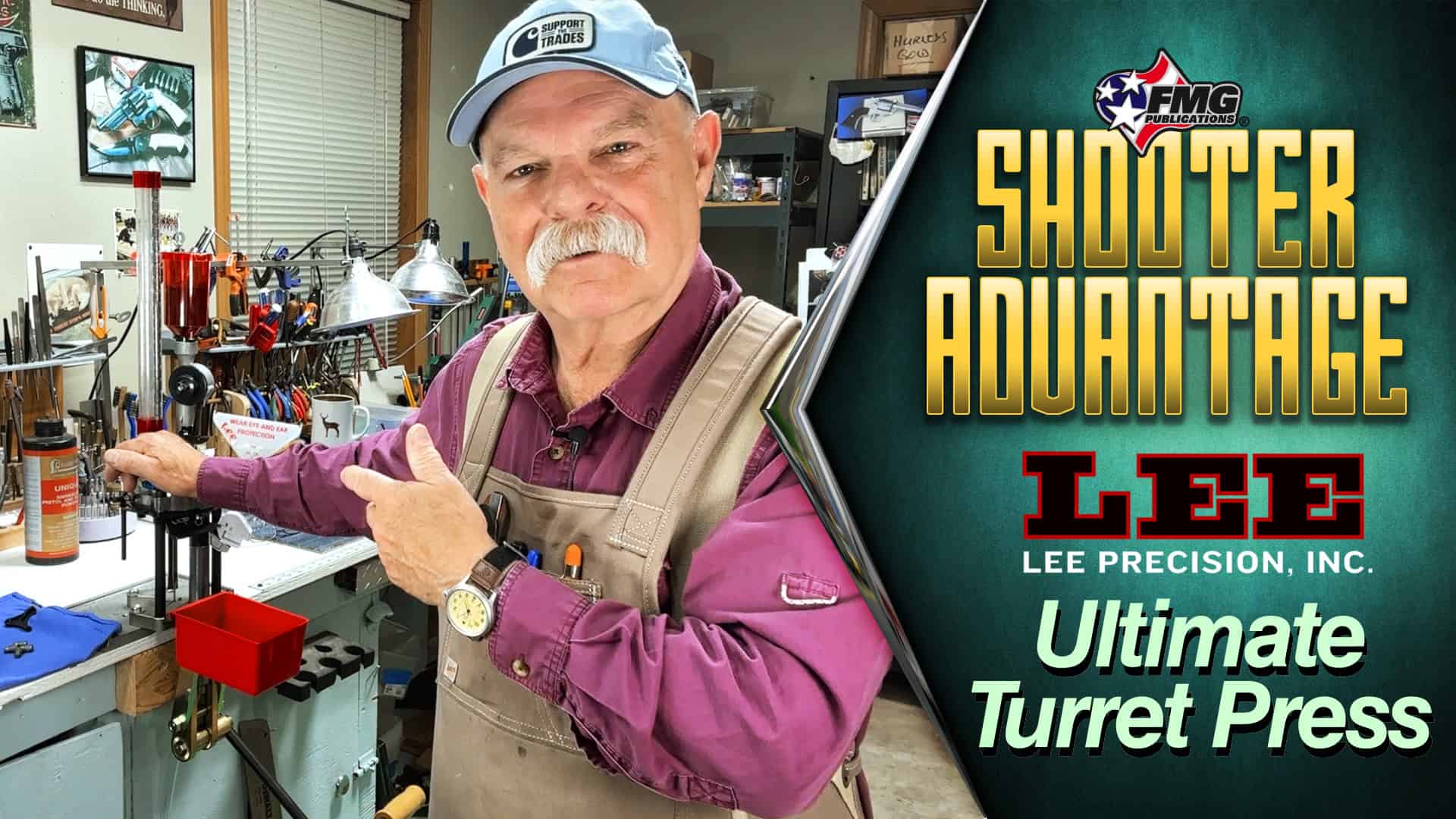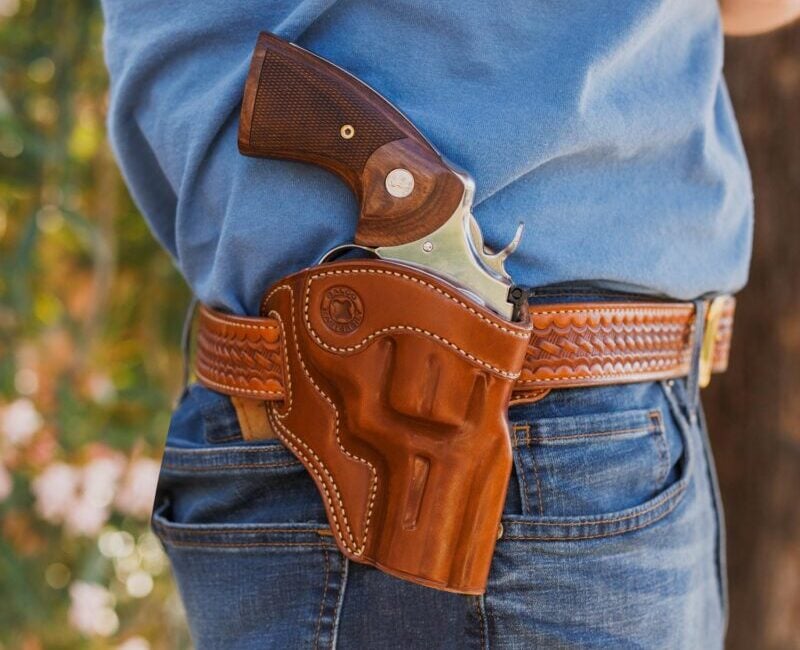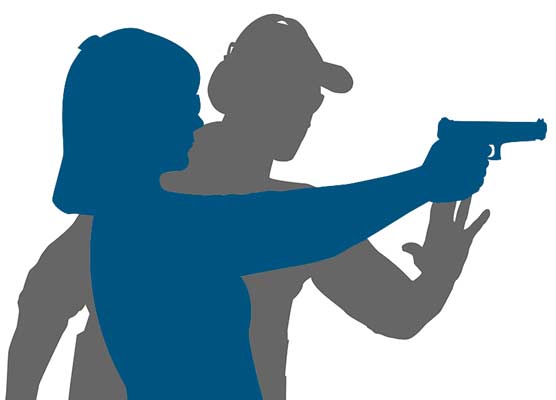Learning From Lawyers
I’m writing this just after returning from the Texas Bar Association’s annual CLE (Continuing Legal Education) conference on Texas Firearms Law. There was a lot for a cop to learn. Some of the speakers were policemen before they became attorneys, and at least one still wears both hats.
Larry McDougal was a full-time cop who worked his way through law school while patrolling the streets. He has since been both a prosecutor and a defense attorney, and keeps his hand in as a part-time police officer to this day, trading his briefcase for a GLOCK 21 duty pistol on weekends.
Texas now has open carry, but Larry reports damn few people, including cops, are practicing it in the Lone Star State. He points out anyone carrying openly is required by specific Texas law to have the gun in a holster, not just stuffed in a waistband or hanging out of a pocket. Furthermore, the law specifies it has to be in either a belt holster or a shoulder holster. I presume this to mean an ankle holster at a nudist camp is technically a no-no.
Texas law provides for businesses to ban either concealed or open carry, or both, on their premises. Larry brought out the interesting case of Chiarini v. State in 2014, in which it was ruled a man could carry on the common grounds of his posted condominium complex, since as the owner of one of the 180 condos there, he was a 1/180th owner of the property and therefore exempt from posting.
Bottles and Bullets
The combination of a snoot full of booze and a hand-full of off-duty gun has jammed up many a cop. Texas, like some other jurisdictions, forbids both open and concealed carry in establishments which earn more than 51 percent of their income from selling alcohol by the drink. In his lecture on “Firearms Law Issues in the Hospitality Industry,” attorney Dewey Brackin noted the 51 percent figure is determined by the gross revenue of the premises, and as to the establishment’s staff, only the bar’s owner or the owner’s designated primary manager on duty may be armed therein.
Technically, we were told, the “no guns in bars” rule applies to off-duty officers, even if they are sworn in the state of Texas, and certainly if they are visiting from out of state.
It is not, however, a problem to have a drink in a restaurant having a liquor license but earning most of its gross income from food sales, not alcohol. That said, Texas law forbids carrying a gun while intoxicated, whether in a restaurant, a bar, or the sidewalk or park. If you are a visiting cop, current or retired and carrying under the Law Enforcement Officer Safety Act (LEOSA, formerly known as H.R. 218), you are likewise foreclosed from carrying while intoxicated.
Exactly how much booze is that? Well, on this point, the law seems to be as fuzzy as some drinkers get. One lecturer at the seminar suggested “buzzed is okay, but drunk will get you arrested.”
Plan A vs. Plan B
However, Attorney Charles Cotton, the longtime, hugely successful legislative counsel for the Texas State Rifle Association, has a different take. “No (particular) blood alcohol content (BAC) is specified under the open carry law in Texas, but .08 percent is presumed,” he told us. Logic tells us “Plan A” is, “Don’t consume alcohol while carrying.” The “Plan B” would be, limit yourself to one drink per hour to allow the alcohol to metabolize.
Take the warning signs in the various establishments seriously. It will be a “30.06” sign if no concealed carry is allowed, and a “30.07” sign if only open carry is banned. There seem to be quite a few of the latter. Attorney Cotton explained ignoring a warning sign is a Class C misdemeanor in Texas, but refusing to leave when told to do so is a Class A misdemeanor. The latter can bring up to a year in jail, and four- or five-year loss of the license to carry a gun in Texas at all, we were told.
No cop is going to be on the job long before having to deal with lawyers. It’s always better to be hearing them warn you about pitfalls beforehand, than to be getting accused and cross-examined by one of them after falling into the given pit.






